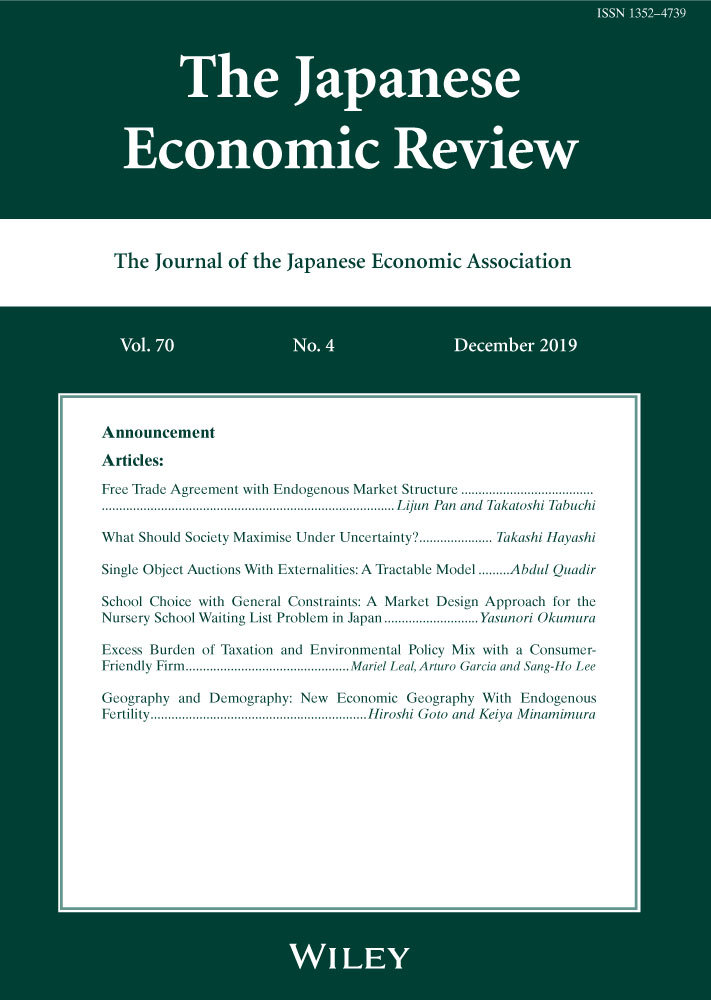Joint Allocation of Leisure and Consumption Commodities: A Japanese Extended Consumer Demand System 1979—90
Abstract
In this study we estimate the parameters of a household expenditure function which includes joint choice of leisure and consumption commodities in scope without a separability assumption. We have used Japanese prices, wage rate, labour supply, and expenditure data on ten commodity groups, collected from 47 cities over 12 years. This data set has the advantage that separate observations are available for each data point for all the variables. We employed the AI demand system, for estimation. Controlling for time-specific effects, the result implied a definite rejection of the weak separability of labour supply and commodity choice, and non-rejection of the homogeneity and symmetry restrictions on the demand system. All the own-price elasticities are significantly negative, and both substitutes and complements are observed across commodity groups. As for the negativity, all but one of the eigenvalues of the substitution matrix are negative. The result as a whole showed consistency with demand theory. The estimated compensated labour supply elasticity is 0.39, which is in reasonable agreement with the previous studies.




